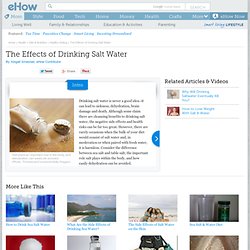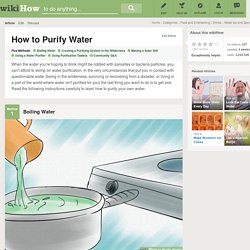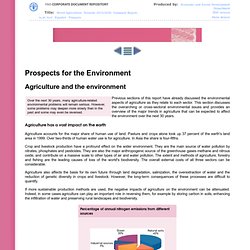

How to Create an Emergency Water Supply. The Effects of Drinking Salt Water. Sea salt and table salt have the same general makeup--both consist mostly of the minerals sodium and chloride and share the same nutritional value.

But they are very different in taste, texture and processing. In the same effect, drinking sea salt water versus drinking homemade table salt water is different for your body. Although less natural, sea salt water contains much more sodium chloride than the home-made version. So which is better for you? According to Mayo Clinic nutritionists, sea salt is healthier on its own since it is produced naturally through evaporated seawater with little processing and handling. As with anything you consume, the more organic the product the better for your body, so stick with sea salt when seasoning foods. How to Change Sea Water to Drinking Water. How to Convert Salt Water into Freshwater (Drinking water) How Can I Make a Water Purifier to Remove Salt? National Geographic Magazine - NGM.com. The Big Idea Published: March 15, 2010 Art by Bryan Christie.

Sources: Tom Pankratz, Global Water Intelligence; International Desalination Association; Mark A. Shannon, University of Illinois; Aleksandr Noy, University of California, Merced Get the Salt Out There's no shortage of water on the blue planet—just a shortage of fresh water. Three hundred million people now get their water from the sea or from brackish groundwater that is too salty to drink. Desalination. Desalination. With new water desalination method, potable water for disaster areas. Water, water, everywhere; nor any drop to drink.

Potable water is always in high demand and short supply following a natural disaster. A new technique for water desalination could lead to small, portable units that could be sent to disaster sites or remote locations. Converting salty seawater to potable fresh water usually requires two things: a large amount of reliable electrical power, and a large-scale desalination plant.
A popular desalination method is reverse osmosis, which uses membranes that filter out the salt. But it requires powerful pumps to maintain the high pressure needed to push the water through the membrane. But a new technique developed by researchers at MIT and in Korea could lead to small units that could deliver enough fresh water to supply the needs of a family or small village, powered by solar cells or batteries. The system can also remove contaminants, viruses and bacteria. That's enough drinking water for several people. Desalination Techniques. How to Purify Water: 7 steps (with pictures) Categories: Water Ice and Sports Drinks In other languages: Español: purificar agua, Deutsch: Wasser reinigen, Português: Purificar Água, Nederlands: Water zuiveren, Italiano: Purificare l'Acqua, Français: purifier l'eau, Русский: очистить воду, 中文: 净化水, Čeština: Jak pročistit vodu, Bahasa Indonesia: Menjernihkan Air, 日本語: 水の浄化, العربية: تنقية المياه, ไทย: ทำให้น้ำบริสุทธิ์, हिन्दी: पानी को शुद्ध करें, 한국어: 물을 정수하는 방법, Tiếng Việt: Làm sạch Nước.

World agriculture: towards 2015/2030. Agriculture and the environment Previous sections of this report have already discussed the environmental aspects of agriculture as they relate to each sector.

This section discusses the overarching or cross-sectoral environmental issues and provides an overview of the major trends in agriculture that can be expected to affect the environment over the next 30 years. Agriculture has a vast impact on the earth Agriculture accounts for the major share of human use of land. Pasture and crops alone took up 37 percent of the earth's land area in 1999. Crop and livestock production have a profound effect on the wider environment. Agriculture also affects the basis for its own future through land degradation, salinization, the overextraction of water and the reduction of genetic diversity in crops and livestock.
If more sustainable production methods are used, the negative impacts of agriculture on the environment can be attenuated. Agriculture as a cause of air pollution Pressures on biodiversity. Dirty Water, Dwindling Resources Threaten Asia-Pacific. Dirty Water, Dwindling Resources Threaten Asia-Pacific WASHINGTON, DC, August 20, 2002 (ENS) - Polluted water and poor sanitation are the biggest killers of children in Asia and the Pacific, finds a new report by the United Nations Economic and Social Commission (ESCAP) for the region.

The report, which details the region's environmental problems, including water pollution, was released to help guide experts meeting later this month at the World Summit on Sustainable Development in Johannesburg, South Africa.